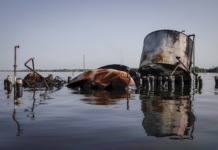[ad_1]
Venezuela used to be famous for the world’s largest oil reserves, Caribbean beaches, baseball, and beauty queens. Since the price of oil started to plummet in 2014, it has become the land of the almost unbelievable.
Its economic meltdown has been well-documented, from currency arbitrage schemes and five-day weekends to save electricity to toilet paper shortages. Then there are the dire shortages of food and medicine that force many Venezuelans to spend hours a day in lines that stretch for blocks. Beneath the urgent headlines lies a simmering political and social crisis that started long before the oil collapse.
Hugo Chavez, the former president, who died of cancer in 2013, styled himself a champion of the poor, but enshrined policies—including nearly free gasoline, subsidized international travel, and cheap foreign currency—that helped those who needed help least. When the dollars ran out as oil prices crashed, many of the policies that worked when oil was at $100 a barrel were exposed for the mirage they were.
The country’s current president, Nicolas Maduro (who said that Chavez once appeared to him in the form of a bird), is trying to pick up the pieces of a crumbling economy even as he defends the legacy of Chavismo. Rather than reform, though, the unpopular Maduro has doubled down on many of the same failed policies. The country’s currency, the bolivar, has lost 99.6 percent of its value on the black market in the past five years. With the opposition clamoring for his ouster, Maduro has taken an autocratic turn, suspending efforts to push for a recall referendum on his rule.
As a Vatican-mediated dialogue unfolds, the world is watching. It’s bad enough that Venezuelans are besieged. But Caracas, the capital, is only a three-hour flight from Miami, and the country maintains strong economic ties with the U.S. It’s also a founding member of the OPEC oil cartel. Its fortunes will have profound implications for the rest of Latin America, the U.S., and the globe.
[ad_2]
fuente








